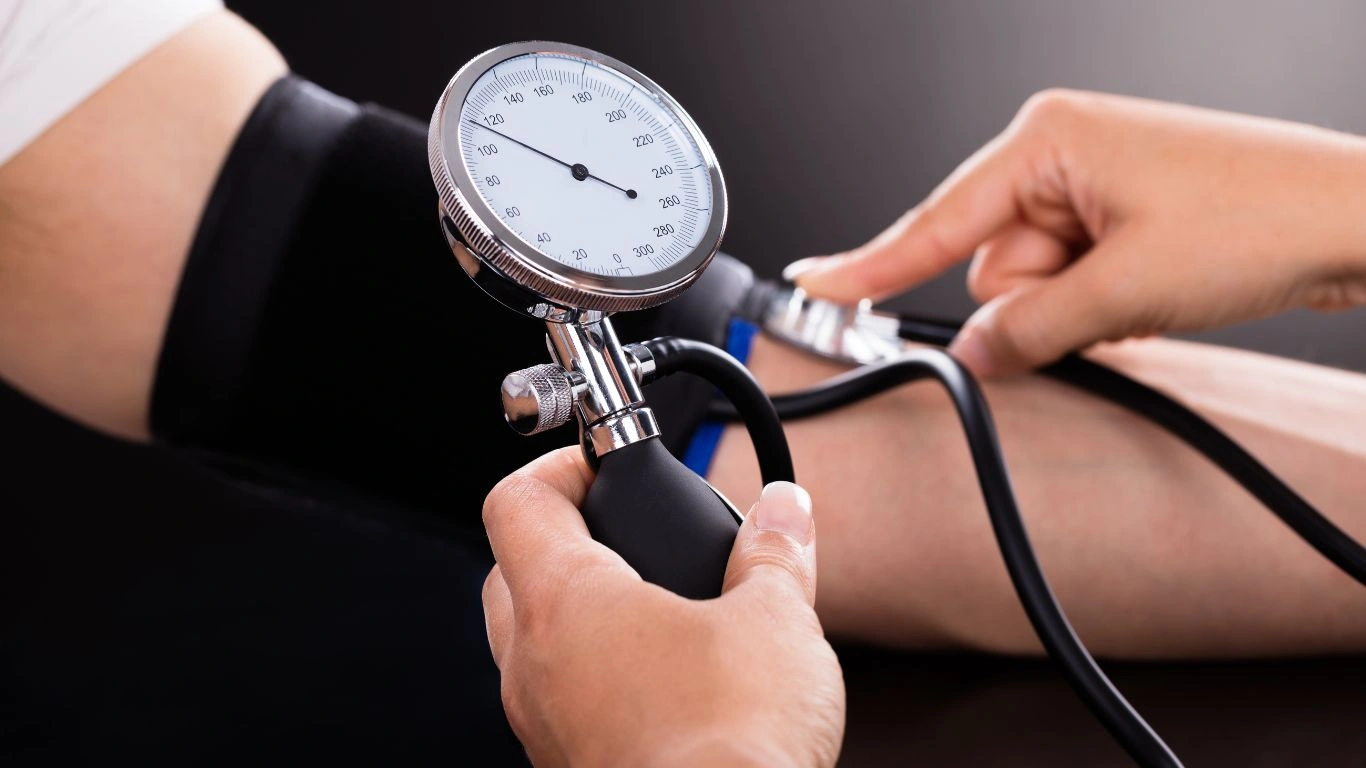How to Create a Blood Pressure Journal to Take Control of Your Health
If you’re someone dealing with hypertension or if you’re trying to get your blood pressure under control, one of the most effective and simple tools you can use is a blood pressure journal. As a physician, I’ve seen firsthand how helpful it can be to track your blood pressure regularly. Not only does it help you spot trends and identify potential problems early on, but it also gives your healthcare provider a clearer picture of how your treatment plan is working. In this article, I’ll guide you through how to create a blood pressure journal and explain why it’s such an essential part of managing hypertension.
Why Keep a Blood Pressure Journal?
Managing hypertension isn’t just about taking medication and hoping for the best. It’s about taking an active role in your health and staying on top of your blood pressure readings. Keeping a blood pressure journal can make a huge difference in your ability to control your hypertension. In my experience, patients who track their blood pressure regularly are more likely to see improvements and have better conversations with their doctors about their treatment options.
It’s easy to underestimate the importance of tracking your blood pressure. After all, a lot of people assume that as long as they’re taking their medication, their blood pressure will be under control. But blood pressure can fluctuate throughout the day, depending on things like stress, diet, exercise, and even medication. A blood pressure journal gives you a way to monitor those fluctuations and make adjustments if necessary.
Plus, when you track your blood pressure over time, you’ll have a record that you can share with your doctor. This can help your healthcare provider make more informed decisions about your treatment, adjust your medication if needed, and spot any issues that may be contributing to your hypertension.
How to Create a Blood Pressure Journal
Now, let’s get into the nuts and bolts of creating a blood pressure journal. It doesn’t have to be complicated, and the best part is, you can customize it to fit your needs. Let’s break it down step by step.
Step 1: Choose Your Format
First things first, you’ll need to decide on the format of your blood pressure journal. There are a few different ways you can go about this:
- Paper Journal: You can opt for a traditional, handwritten journal. This is a great option if you prefer to write things down by hand, and it can be as simple or as detailed as you like.
- Digital Journal: If you’re someone who likes to keep things digital, there are plenty of apps available to track your blood pressure. Some even sync with your blood pressure monitor to make the process easier.
- Spreadsheet: If you’re comfortable with spreadsheets, creating one in Excel or Google Sheets is another option. This way, you can easily track your progress and generate graphs that show trends over time.
There’s no right or wrong choice here—it’s all about what works best for you. The key is consistency, so pick a format that you’ll stick with over time.
Step 2: Set a Regular Schedule for Measuring Your Blood Pressure
Next, it’s important to establish a regular schedule for taking your blood pressure readings. Consistency is key when it comes to tracking your blood pressure, and you’ll want to make sure you’re measuring it at the right times. I recommend taking your blood pressure at least once a day, and ideally at the same time every day.
If you’re not sure when to take your readings, here are some good guidelines:
- Morning: Take your blood pressure first thing in the morning, before you eat or drink anything. This will give you a baseline reading.
- Evening: Take it again in the evening, around the same time each day, to see how your blood pressure changes throughout the day.
- Before or After Medication: If your doctor has prescribed medication for hypertension, it can be helpful to take your blood pressure before and after you take your medication. This will help you understand how your medication is affecting your readings.
By setting a schedule, you’ll have more accurate data that you can use to track patterns and adjust your treatment plan if needed.
Step 3: Record Your Readings and Other Relevant Information
Now that you’re measuring your blood pressure consistently, it’s time to start recording your readings. Be sure to note the following:
- Date and Time: Record the exact date and time of each reading. This is important for tracking trends and understanding how your blood pressure fluctuates.
- Blood Pressure Reading: Write down your systolic and diastolic numbers. Don’t forget to include units (mmHg)!
- Other Factors: Note anything that might have affected your reading. Did you just exercise? Were you feeling stressed? Did you eat a salty meal? All of these factors can impact your blood pressure, so it’s important to keep track of them.
- Symptoms: If you experience any symptoms like dizziness, headaches, or shortness of breath, make sure to jot them down. This could help you or your doctor identify potential triggers for high blood pressure.
Recording all of this information will give you and your healthcare provider a comprehensive picture of your blood pressure and overall health.

Tips for Staying Consistent with Your Blood Pressure Journal
Now that you know the basics of how to create a blood pressure journal, let’s talk about how to stay consistent. Like I mentioned earlier, the key to success is regular tracking. Here are some tips to help you stay on track:
- Set a reminder: Use your phone’s alarm or a calendar app to remind you to check your blood pressure each day.
- Keep your equipment handy: Make sure your blood pressure monitor is always within reach so you don’t have to search for it when it’s time to measure your pressure.
- Make it part of your routine: Find a time each day that works for you—whether it’s right after you wake up or before you go to bed—and make it a part of your daily routine.
- Stay motivated: Remember that your blood pressure journal is a tool to help you take control of your health. Celebrate small victories along the way, and don’t get discouraged if you don’t see immediate changes.

How to Read and Interpret Your Blood Pressure Journal
Once you’ve been keeping a blood pressure journal for a while, the next step is learning how to read and interpret your data. This is where things get really interesting, and you’ll begin to understand your body’s patterns and how certain lifestyle choices or medications affect your blood pressure. As a physician, I’ve seen countless patients who were surprised by how much they could learn just by looking at their journal.
Let’s dive into what you should look for and how to interpret your blood pressure readings:
Understanding Your Blood Pressure Readings
Your blood pressure consists of two numbers: the systolic (the top number) and the diastolic (the bottom number). These two numbers tell us a lot about the state of your cardiovascular system. The systolic number represents the pressure in your arteries when your heart beats, while the diastolic number measures the pressure when your heart is resting between beats.
Here’s a quick refresher on what the numbers mean:
- Normal: Less than 120/80 mmHg
- Elevated: 120-129/
- Hypertension Stage 1: 130-139/80-89 mmHg
- Hypertension Stage 2: 140 or higher/90 or higher mmHg
- Hypertensive Crisis: Higher than 180/120 mmHg (this requires immediate medical attention)
When reviewing your journal, you should pay attention to the overall trends in your readings, rather than focusing too much on individual measurements. For example, if your readings are fluctuating wildly from day to day, it could indicate that something is off, whether it’s related to stress, medication, diet, or other factors.
Identifying Patterns
One of the most valuable aspects of keeping a blood pressure journal is identifying patterns. When you track your readings over time, you may begin to notice that your blood pressure is consistently higher on certain days or at certain times. This can help you pinpoint what’s influencing your readings. Maybe it’s after a stressful meeting at work, or perhaps your blood pressure spikes after eating a particularly salty meal.
For example, one of my patients had been struggling with high blood pressure for months. After a few weeks of tracking her readings, she noticed that her blood pressure tended to spike right after her afternoon coffee break. We were able to adjust her diet, cutting back on caffeine, and her blood pressure improved significantly. Without the journal, she might not have made that connection.
So, don’t be discouraged if you see some inconsistencies or higher-than-normal readings. The key is to look for trends and try to understand what’s driving those changes. Once you start seeing these patterns, you can work with your doctor to make adjustments to your treatment plan, lifestyle, or diet.
Using Your Blood Pressure Journal to Improve Your Health
Now that you’re understanding your data better, let’s talk about how to use your blood pressure journal to take actionable steps toward improving your health. Keeping track of your blood pressure is only half the battle—the next step is using that data to make informed decisions about your lifestyle and treatment plan.
Making Lifestyle Adjustments
In many cases, lifestyle changes can make a big difference in controlling your blood pressure. If you’ve been tracking your readings and noticing patterns related to things like stress, diet, or exercise, now’s the time to make some changes. Here are a few common adjustments that can help lower blood pressure:
- Reducing Sodium Intake: Too much sodium in your diet can cause your body to retain fluid, which can raise blood pressure. Cutting back on processed foods and cooking with less salt can make a big difference.
- Increasing Physical Activity: Regular exercise, like walking, swimming, or cycling, can lower your blood pressure over time. Aim for at least 30 minutes of moderate activity most days of the week.
- Managing Stress: Chronic stress is a major contributor to high blood pressure. Try practicing relaxation techniques such as deep breathing, yoga, or meditation.
- Maintaining a Healthy Weight: Losing even a small amount of weight can help reduce your blood pressure, especially if you’re overweight or obese.
- Limiting Alcohol: Drinking too much alcohol can raise your blood pressure. If you enjoy a glass of wine or a beer, try to limit it to a moderate amount.
By taking a close look at your blood pressure journal, you can start identifying areas where small changes could make a big difference in your health. Don’t be discouraged if you don’t see immediate results—it can take time for lifestyle changes to show up in your readings, but consistency is key.

Consulting with Your Doctor
Your blood pressure journal is also a valuable tool when it comes to communicating with your healthcare provider. Bringing your journal to your doctor’s appointments gives them a clear picture of your blood pressure trends, which can help them make more informed decisions about your treatment plan.
For example, if your doctor notices that your blood pressure spikes after certain activities or times of day, they might recommend a change in medication or adjust the dosage. They can also use the journal to track how well your medication is working over time, making adjustments as needed.
Remember, your doctor is there to help you manage your hypertension, and they will appreciate the information you provide. If you’re unsure about any of the readings or trends you’re noticing, don’t hesitate to ask for their advice. They might suggest more frequent monitoring or tests to rule out any underlying health conditions.
Understanding the Role of Medication in Your Blood Pressure Management
In some cases, lifestyle changes alone may not be enough to bring your blood pressure under control. If your readings are consistently high, your doctor may prescribe medication to help lower it. Blood pressure medication works by helping your heart pump more efficiently, relaxing your blood vessels, or reducing the amount of fluid in your body.
When you’re on medication, tracking your blood pressure becomes even more important. Your blood pressure journal can help you and your doctor understand how well the medication is working, and whether adjustments are necessary. If you notice that your blood pressure remains high despite taking your medication as prescribed, it’s important to bring this to your doctor’s attention.
Sometimes, it’s not about one-size-fits-all solutions. In my experience, managing hypertension often requires a combination of lifestyle changes and medication. With a blood pressure journal, you can play an active role in understanding how both of these factors are impacting your health.

Common Mistakes to Avoid in Your Blood Pressure Journal
While tracking your blood pressure can be incredibly helpful, there are a few common mistakes I’ve seen patients make when keeping their journals. These mistakes can skew the data and ultimately make it harder to track real progress. As a doctor, I always emphasize the importance of consistency and accuracy when it comes to blood pressure monitoring. So, let’s talk about a few pitfalls you’ll want to avoid when keeping your blood pressure journal.
1. Inconsistent Timing
One of the biggest mistakes is not measuring blood pressure at the same time each day. I get it—life happens, and it’s easy to forget or get sidetracked. But the key to understanding your trends is consistency. Blood pressure can fluctuate at different times of day based on your activity, stress levels, and what you’ve eaten. By keeping a regular schedule, you’ll have more accurate data that truly reflects your typical readings.
As I mentioned before, taking your blood pressure in the morning before you’ve had breakfast or coffee, and then again in the evening, is a great habit. This will allow you to compare your morning baseline to how your body’s doing later on in the day.
2. Forgetting to Track Symptoms or Context
Another common mistake is not recording other important factors that could influence your blood pressure. For instance, did you have a stressful meeting before taking your measurement? Did you have an extra cup of coffee? Or maybe you were running late and didn’t have time to relax before taking your reading. These little details can significantly impact your results, and tracking them is key to understanding what’s causing your fluctuations.
Without context, the numbers in your journal don’t tell the full story. So, don’t skip over the small things that might seem irrelevant at first. Write them down. You’ll be surprised by how helpful these details can be when analyzing your data with your healthcare provider.
3. Not Updating Your Journal Regularly
Another mistake I’ve noticed is leaving gaps in the journal. Maybe you miss a few days or even weeks of readings. This can make it difficult to identify trends and can also give you an inaccurate picture of your blood pressure management. Your journal should reflect consistent, ongoing tracking to be truly valuable. If you have to set reminders or make a habit out of taking your blood pressure, do what you need to keep it consistent.
Try to think of your blood pressure journal as a tool to help you and your doctor stay proactive in managing your hypertension. The more complete the data, the better your decisions will be.

When to Seek Professional Help
Even with a well-maintained blood pressure journal, there are times when it’s important to reach out to your healthcare provider. If your readings consistently remain elevated or you notice significant changes in your blood pressure, don’t hesitate to seek professional advice.
Sometimes, despite your best efforts, you may still face challenges in managing your blood pressure. If your readings are in the hypertensive crisis range (above 180/120 mmHg), or if you start experiencing symptoms like dizziness, chest pain, or severe headaches, it’s important to get medical help right away. These could be signs of more serious conditions that require immediate intervention.
Also, if you notice that your blood pressure is fluctuating significantly despite taking your medication and following a healthy lifestyle, it’s a good idea to consult with your doctor. They may want to adjust your medication or run additional tests to understand what’s going on. Your blood pressure journal can serve as a valuable tool to guide these discussions and help pinpoint potential triggers.
References and Resources
To continue learning about managing hypertension and keeping track of your blood pressure, here are some great resources that I often recommend to my patients:
These sites provide valuable, up-to-date information on hypertension, healthy living, and ways to manage your blood pressure effectively.

Disclaimer
While this article provides general information about blood pressure management, it’s important to remember that everyone’s health journey is unique. Always consult your healthcare provider before making any significant changes to your medication, diet, or lifestyle. The advice shared here is based on my personal experience as an Internal Medicine Physician specializing in Hypertension Management, but it’s essential to work closely with your doctor to create a plan that’s tailored to your specific needs.

Dr. Gwenna Aazee is a board-certified Internal Medicine Physician with a special focus on hypertension management, chronic disease prevention, and patient education. With years of experience in both clinical practice and medical writing, she’s passionate about turning evidence-based medicine into accessible, actionable advice. Through her work at Healthusias.com, Dr. Aazee empowers readers to take charge of their health with confidence and clarity. Off the clock, she enjoys deep dives into nutrition research, long walks with her rescue pup, and simplifying medical jargon one article at a time.






